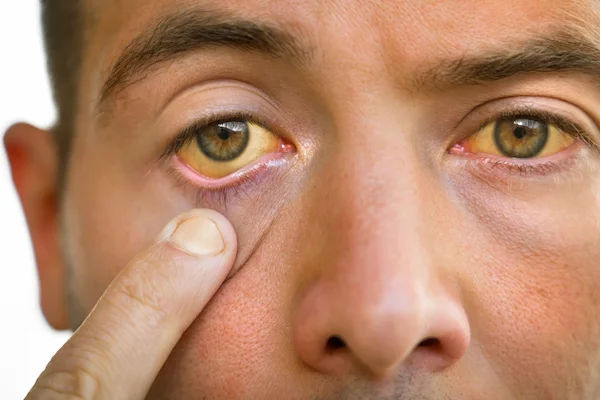Monsoon Hair Fall; Your Ultimate Guide to Healthy Hair in the Rainy Season
Discover why hair fall increases in the monsoon and learn the best tips, routines, and nutrition to keep your hair strong, healthy, and frizz-free during the rainy season.


Introduction
The pitter-patter of rain brings relief from the scorching summer heat, but for many, it also signals the start of a frustrating problem: increased hair fall. If you've noticed more strands than usual clogging your shower drain or clinging to your hairbrush during the monsoon, you're not alone. This seasonal shedding is a common concern driven by a combination of environmental factors and haircare missteps. High humidity, impure water, and a susceptible scalp can create a perfect storm for hair weakness and loss. But don't despair—this doesn't have to be your annual hair nightmare. This comprehensive guide will delve into the science behind monsoon-induced hair fall, providing you with an actionable, step-by-step plan to not only combat the shedding but also to strengthen your hair for the long haul. We'll cover everything from your washing routine and dietary choices to knowing when it's time to consult a professional. Let's embrace the rains with confidence and healthy hair.
Why Does Hair Fall Increase in Monsoon? The Science Behind the Shedding
Understanding the "why" is the first step to finding an effective solution. Hair fall during the monsoon isn't just in your head; it's a real phenomenon caused by specific environmental shifts that directly impact the health of your scalp and hair shafts.
High Humidity: The Primary Culprit
The most significant change during the monsoon is the drastic increase in atmospheric moisture. High humidity causes the hair shaft, which is made of a protein called keratin, to absorb excess water. This makes the hair swell and stretch, weakening its structural integrity. As a result, hair becomes more fragile, prone to frizz, and more likely to break easily. Furthermore, a humid scalp is an ideal breeding ground for microbes, leading to infections that can exacerbate hair loss.
Water Woes: The Impact of Impure Rainwater and Hard Water
We often get caught in the rain, and the water that touches our hair isn't always pure. Monsoon rainwater can be acidic and contain pollutants. Even the water from our taps can be harder during this season due to various factors. Hard water contains minerals like calcium and magnesium that leave a residue on the scalp and hair. This residue can make hair dull, lifeless, and difficult to manage, while also clogging hair follicles, which can weaken roots and lead to increased shedding.
Fungal and Bacterial Infections on the Scalp
A warm, moist scalp is a paradise for fungi like Malassezia, which can lead to dandruff and seborrhoeic dermatitis. Bacterial infections can also thrive. These conditions cause inflammation, itching, and flaking. The constant scratching to relieve the itch damages hair follicles, disrupting the growth cycle and causing hair to fall out prematurely. This is a key reason why maintaining a clean, dry scalp is crucial in the rainy season.
Weakened Hair Roots and Increased Porosity
The constant cycle of wetting and drying that hair undergoes in the monsoon can stress the hair roots. When hair is wet, the roots are at their most vulnerable. Combing or tying wet hair tightly can put excessive strain on these weakened roots, leading to traction alopecia. Additionally, the cuticle layer of the hair lifts up in high humidity, increasing hair porosity. Highly porous hair loses moisture and proteins easily, becoming brittle and more susceptible to breakage.
Building Your Monsoon Hair Care Routine: A Step-by-Step Approach
A generic haircare routine won't cut it during the monsoon. You need a targeted strategy that addresses the unique challenges of the season. Here’s how to build your ultimate monsoon hair care regimen.
Shampooing Smart: Frequency and Formula
Contrary to popular belief, you may need to shampoo more frequently in the monsoon, but with the right product. Aim for 3-4 times a week to prevent oil, sweat, and pollutant build-up.
• Choose the Right Shampoo: Opt for a mild, clarifying, or anti-dandruff shampoo. Clarifying shampoos help remove hard water and product build-up, while anti-dandruff shampoos containing ketoconazole or zinc pyrithione can keep fungal infections at bay. Avoid heavy, creamy shampoos that can weigh hair down.
• Technique Matters: Focus on cleansing the scalp rather than the hair length. Gently massage the shampoo into your scalp with your fingertips (not nails) to stimulate blood circulation and ensure a thorough cleanse.
The Right Way to Condition Your Hair
Conditioning is non-negotiable, but application is key. Monsoon hair needs moisture without heaviness.
• Apply Strategically: Only apply conditioner from the mid-lengths to the ends of your hair. Avoid the scalp to prevent it from becoming greasy and clogged.
• Choose a Lightweight Formula: Use a silicone-free, volumising, or lightweight conditioner. These provide hydration without leaving a residue that attracts dirt and moisture.
To Oil or Not to Oil? Debunking the Monsoon Myth
Traditional wisdom says to oil hair regularly, but during the monsoon, this can backfire. Leaving oil on for long periods in a humid environment can attract dirt and lead to infections. However, this doesn't mean you should abandon oil entirely.
• Light Oils for Short Durations: Use light oils like jojoba or almond oil. Avoid heavy oils like coconut oil.
• Pre-Shampoo Treatment Only: Apply a small amount of oil an hour before you plan to shampoo. This protects the hair shaft from the drying effects of the shampoo without leaving your scalp greasy.
Dietary Defence: Nutrition for Stronger Hair from Within
Healthy hair starts from within. The monsoon is a great time to boost your intake of hair-friendly nutrients. A deficiency in key vitamins and minerals can make seasonal hair fall much worse. Ensure your diet includes:
• Proteins: Hair is made of protein. Include eggs, lean chicken, fish, lentils, and legumes.
• Iron: Iron deficiency is a leading cause of hair loss. Eat leafy greens, beans, and red meat.
• Omega-3 Fatty Acids: They nourish the hair follicles. Find them in walnuts, flaxseeds, and fatty fish.
• Biotin and Zinc: Essential for hair growth and repair. Sources include nuts, whole eggs, and whole grains.
If you suspect a nutritional deficiency is contributing to your hair loss, a simple blood test can provide clarity. Apollo24|7 offers convenient home collection for tests like vitamin D, HbA1c, ferritin (iron stores), and others that can help identify underlying issues.
Styling and Habits: What to Avoid During Monsoon
Your daily habits play a huge role in managing monsoon hair fall.
• Avoid Tight Hairstyles: Tight ponytails or buns put stress on weakened roots. Opt for loose braids or a low bun.
• Never Sleep with Wet Hair: This is an invitation for fungal growth. Always dry your hair completely before going to bed.
• Minimise Heat Styling: Let your hair air-dry naturally as much as possible. If you must use a dryer, use the cool setting.
• Use a Wide-Toothed Comb: To detangle wet hair, always use a wide-toothed comb to prevent breakage.
When to Seek Professional Help
Some increased shedding is normal, but if you experience any of the following, it's time to consult an expert:
• Hair fall continues unabated even after the monsoon season ends.
• You notice visible patches of hair loss or thinning.
• Your scalp is consistently itchy, red, inflamed, or has painful bumps.
• You see no improvement after following a consistent care routine for 4-6 weeks.
If your condition does not improve after trying these methods, book a physical visit to a dermatologist with Apollo24|7 for a proper diagnosis and personalised treatment plan. It could be a sign of an underlying medical condition like telogen effluvium, alopecia areata, or a hormonal imbalance.
Conclusion
Navigating hair fall during the monsoon requires a shift in perspective and practice. It's not about fighting your hair, but about understanding how the season affects it and adapting your care accordingly. By focusing on scalp health, choosing the right products, nourishing your body, and adopting gentle habits, you can significantly reduce seasonal shedding. Remember, consistency is key. The goal is not just to survive the monsoon but to emerge from it with hair that is stronger and more resilient. View this season as an opportunity to give your hair the extra attention it deserves. If you find that your hair loss is severe or causing you distress, don't hesitate to seek professional guidance to rule out any serious underlying causes. Here's to a rainy season filled with good hair days! Consult a Ophthalmologist for the best advice
Consult a Ophthalmologist for the best advice
Dr. Padmini S
Ophthalmologist
4 Years • MBBS,MS
Bengaluru
Apollo Medical Center, Marathahalli, Bengaluru
Dr. Akashdipta Saha
Ophthalmologist
4 Years • MBBS, MD(Ophthalmology), Fellowship in Retina & Vitreous
Delhi
AIIMS, Delhi
Dr. Harshavardhan Reddy
Ophthalmologist
3 Years • MBBS , MS (Ophthalmology)
Hyderabad
Ram Dev Rao Hospital, Hyderabad

Dr. K Sreekumar Reddy
Ophthalmologist
26 Years • MBBS MD (Ophthalmology) EGESTOLP
Hyderabad
Apollo Hospitals Jubilee Hills, Hyderabad
(25+ Patients)
Dr Kanse Vaibhav
Ophthalmologist
10 Years • MBBS, DO, MS, DNB
Pune
Apollo Clinic, Nigdi, Pune
Consult a Ophthalmologist for the best advice
Dr. Padmini S
Ophthalmologist
4 Years • MBBS,MS
Bengaluru
Apollo Medical Center, Marathahalli, Bengaluru
Dr. Akashdipta Saha
Ophthalmologist
4 Years • MBBS, MD(Ophthalmology), Fellowship in Retina & Vitreous
Delhi
AIIMS, Delhi
Dr. Harshavardhan Reddy
Ophthalmologist
3 Years • MBBS , MS (Ophthalmology)
Hyderabad
Ram Dev Rao Hospital, Hyderabad

Dr. K Sreekumar Reddy
Ophthalmologist
26 Years • MBBS MD (Ophthalmology) EGESTOLP
Hyderabad
Apollo Hospitals Jubilee Hills, Hyderabad
(25+ Patients)
Dr Kanse Vaibhav
Ophthalmologist
10 Years • MBBS, DO, MS, DNB
Pune
Apollo Clinic, Nigdi, Pune
More articles from General Medical Consultation
Frequently Asked Questions
1. Is it normal to lose 100 hairs a day during monsoon?
Yes, it is normal to shed between 50-100 hairs daily. During monsoon, this number can increase slightly due to the environmental factors discussed. However, if you are losing large clumps of hair or notice significant thinning, it may be a cause for concern.
2. What is the best home remedy for hair fall in monsoon?
A good home remedy for monsoon hair care is an apple cider vinegar (ACV) rinse. Mix one tablespoon of ACV with two cups of water. After shampooing, pour this mixture through your hair, leave it on for a minute, and then rinse. This helps restore the scalp's pH balance, remove build-up, and add shine.
3. Can I use coconut oil on hair in rainy season?
It's best to avoid heavy oils like coconut oil during the monsoon as they can attract dirt and moisture, leading to a greasy scalp and potential infections. If you must oil, use lighter oils like jojoba or almond oil for a short duration before washing.
4. How can I protect my hair from rain water?
The best way to protect your hair from rainwater is to wear a hat or carry an umbrella. If your hair does get wet, wash it with a mild shampoo as soon as you get home to rinse out any pollutants or acidity from the rain.
5. Does drinking more water help with hair fall in monsoon?
Absolutely. Hydration is crucial for overall health, including that of your hair cells. Drinking sufficient water helps maintain scalp hydration and flush out toxins, creating a healthier environment for hair growth.




